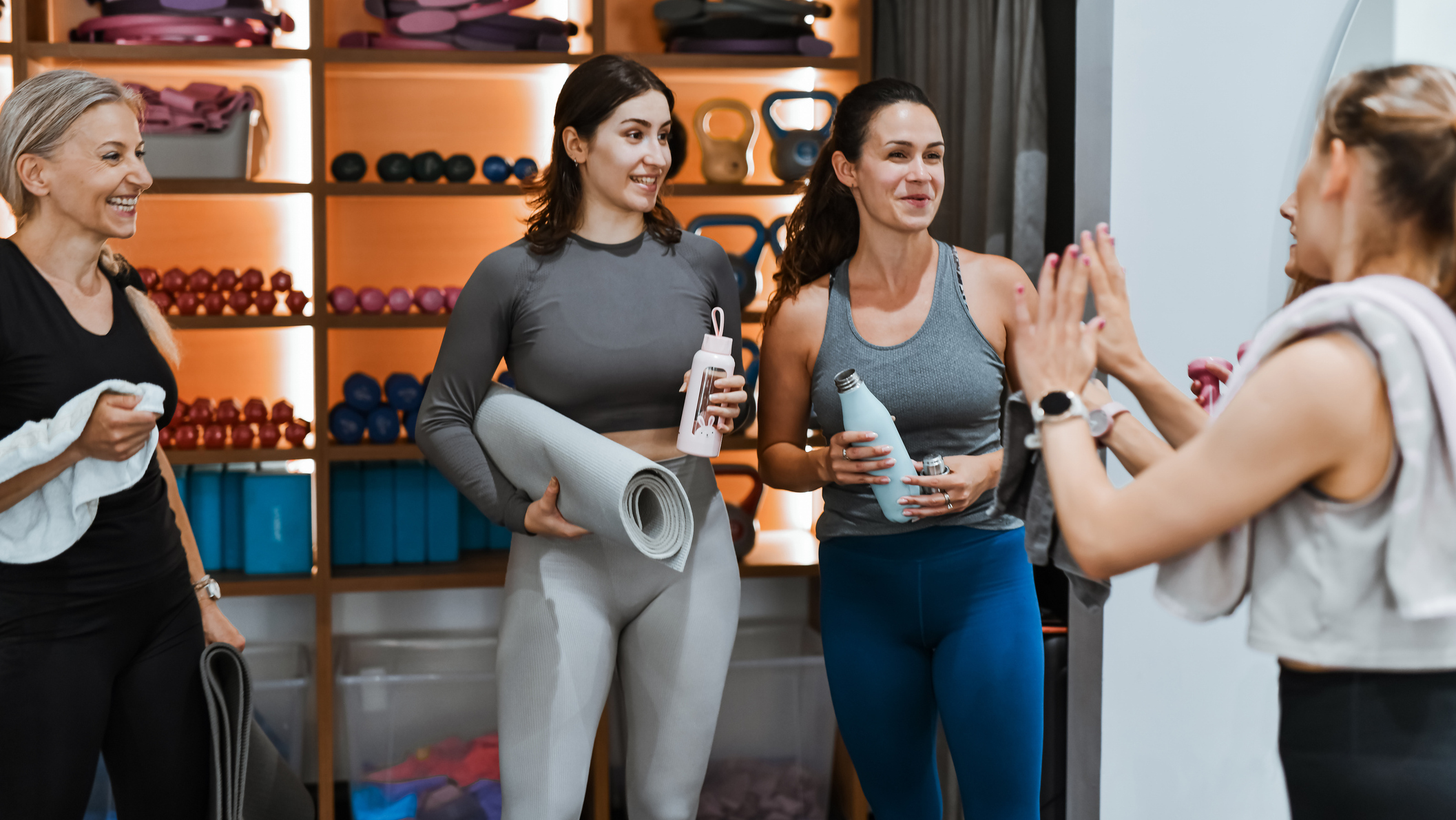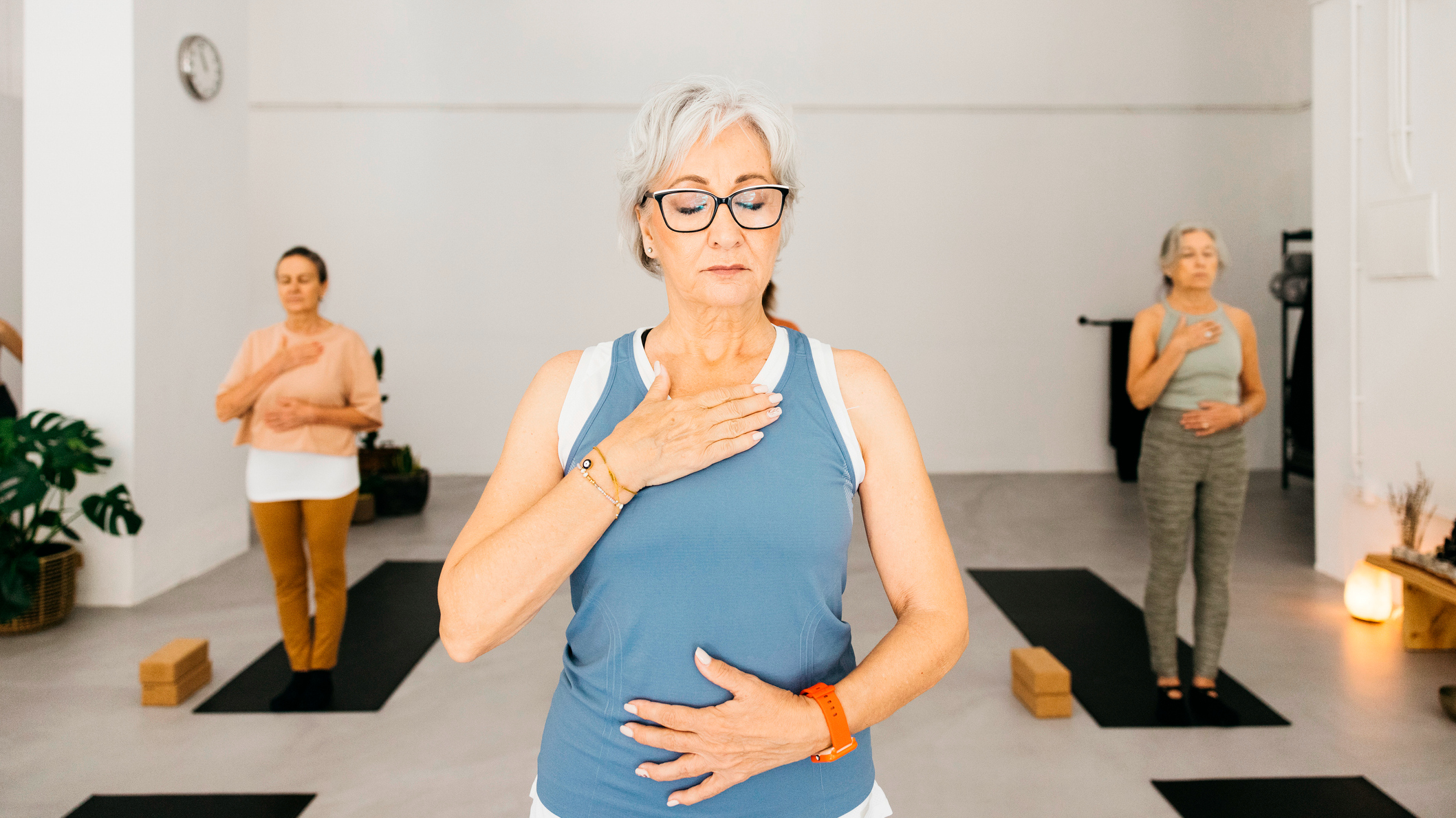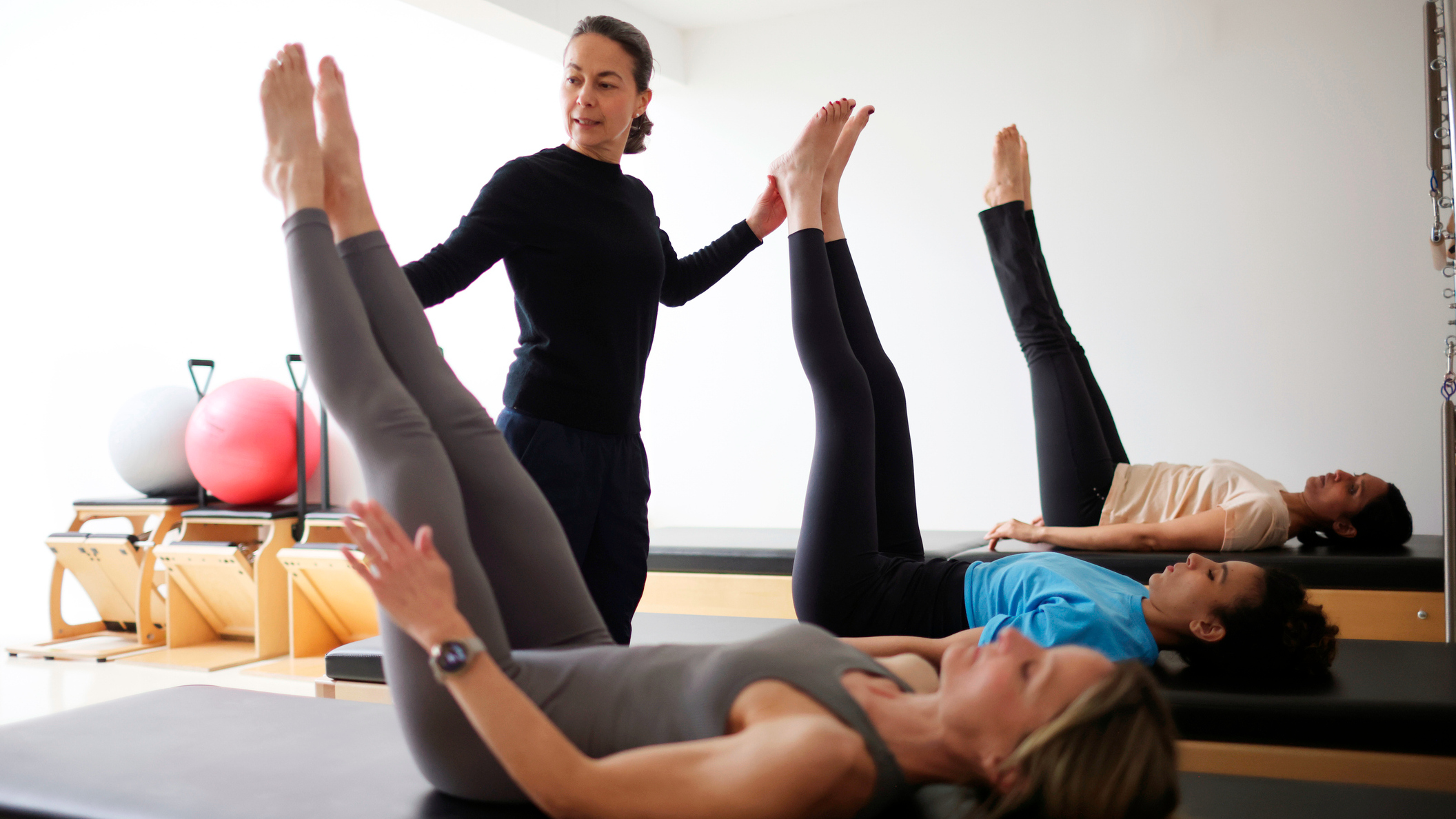Five differences between Pilates and yoga you need to know before deciding which is right for you, according to a certified teacher
A certified yoga and Pilates teacher breaks down each discipline

Yoga and Pilates are two forms of movement that often get grouped together. They each deserve a place in anyone’s routine thanks to their long roll call of benefits for both mind and body, but which is better for beginners? And how can you tell if you would respond better to a yoga flow or a Pilates routine?
Tina Traina is especially well placed to explain the differences. An experienced yoga and Pilates teacher, Traina is head of the Mind & Body studios at David Lloyd Clubs, where she has devised a yoga-Pilates fusion class that builds strength, alignment, mobility and flexibility.
“There are a lot of overlaps with some of the exercises and key benefits,” Traina tells Fit&Well. “And I wouldn't necessarily steer someone towards one or the other, I would try to incorporate both disciplines in your training.”
However, she adds, there are a few points of difference worth understanding before you sign up to one or the other.
1. Yoga promotes greater mind-body connection

Part of yoga involves forging a closer bond between your mind and body by harnessing your breath.
With its centuries-old origins, yoga is a holistic system that incorporates spiritual practices too. Yoga asana (postures)—the movement side of yoga—is just one element.
“Yoga definitely taps into more of the spiritual aspect and the mind-body connection thanks to the inclusion of periods of meditation,” says Traina.
This, she admits, can put some people off, but the principle is to forge a closer bond between your mind and body by harnessing your breath.
Start your week with achievable workout ideas, health tips and wellbeing advice in your inbox.
“In yoga, the breath is mainly used for focus, so you’re using the breath to relax the mind and to focus your energy,” she says.
2. Pilates will teach you to engage your core
In Pilates there is also a heavy emphasis on controlling your breathing, but it’s primarily used to engage the core. “The breath is into the ribs and the focus is on diaphragmatic breathing, breathing to engage the core muscles,” she says.
Mastering diaphragmatic breathing will help you learn how to subconsciously activate your core muscles to support your spine when performing strength exercises and lifting weights.
3. Yoga tends to involve more full-body movements
With an extensive collection of postures for teachers to draw from, it’s rare that you won't engage your whole body when practising yoga.
Pilates, by contrast, “tends to involve higher repetitions of individual movements focused on body alignment” that will target individual muscles.
This can make Pilates a safer option if you need to manage a lingering injury, allowing you to precisely target muscle groups and avoid vulnerable joints, although both Pilates and yoga teachers will be able to adjust a class to suit existing injuries—just make sure you speak up and let them know.
4. Pilates drills more precise body alignment

While both yoga and Pilates are typically low-impact, making them a wise choice for beginners and older adults, the pace and tempo of each can vary wildly.
“Depending on the type of class, a yoga flow might follow a slower, more restorative tempo, or be more dynamic and fast-paced, which is usually an Ashtanga style,” says Traina.
Greater emphasis is also placed on listening to your body and being free in the movement, she adds, while Pilates instructors tend to encourage a more precise body alignment with each pose to promote better posture.
5. Pilates is safer if you are hypermobile
One of the most commonly assumed points of difference is that yoga improves flexibility, whereas Pilates builds strength. In reality, both disciplines can build strength and flexibility, but some bodies might respond better to one.
For example, if you are hypermobile, and have naturally looser connective tissue around your joints and ligaments, you might be better off building strength through Pilates-based movements.
“I wouldn't say one stretch is better in Pilates and another is better in yoga,” says Traina. “There is just a different focus on them.” Yoga postures, for example, tend to be held for longer.
“In Pilates, you might be stretching into repetitions, but you will still benefit from mobile joints and stretched muscles that will support better posture in the long term.”

Sam Rider is an experienced freelance journalist, specialising in health, fitness and wellness. He is also a REPS level 3 qualified personal trainer.
